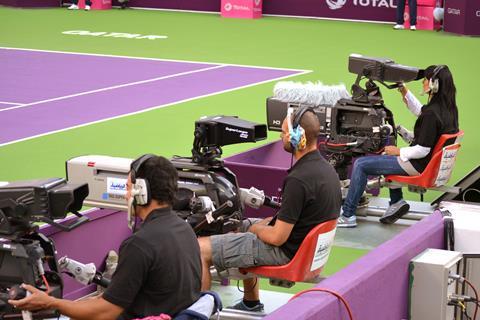Satellite Technology Advancements in Global Sports Broadcasting
In the ever-evolving landscape of global sports broadcasting, satellite technology has emerged as a game-changer, revolutionizing the way we experience and consume sports events from around the world. This technological marvel has not only bridged geographical barriers but has also elevated the viewing experience to unprecedented levels, captivating audiences like never before. The advent of advanced satellite technology has paved the way for seamless live coverage of sporting events, regardless of their location. High-powered satellites orbiting the Earth act as digital relay stations, transmitting crystal-clear audio and video signals across vast distances. This feat of engineering has enabled sports broadcasters to bring the thrill of remote competitions directly into the living rooms of fans worldwide, fostering a sense of unity and shared excitement. One of the most significant advantages of satellite broadcasting lies in its ability to deliver uninterrupted, high-definition HD and even ultra-high-definition UHD broadcasts. The superior image quality and immersive sound provide viewers with a front-row seat to the action, capturing every nuance and detail of the game.

From the beads of sweat on an athlete’s brow to the roar of the crowd, the vivid and lifelike experience transports fans into the heart of the sporting arena, heightening their emotional investment and strengthening their connection to the event. Moreover, satellite technology has revolutionized the way sports broadcasting are conducted, enabling a multitude of simultaneous transmissions and allowing for comprehensive coverage of major sporting events. Dedicated sports channels can now deliver a multitude of perspectives, with multiple camera angles, in-depth analysis, and specialized commentary, catering to the diverse preferences and interests of viewers. This multi-dimensional approach enriches the viewing experience, fostering a deeper understanding and appreciation for the sport. Satellite broadcasting has also played a pivotal role in the globalization of sports, transcending cultural and linguistic barriers. With the ability to transmit broadcasts in various languages and formats, sports fans around the world can now follow their favorite teams and athletes, regardless of their location or native tongue.
This global connectivity has not only expanded the reach of sports but has also facilitated the growth of international fan bases, fostering a sense of unity and shared passion among diverse communities. Furthermore, satellite technology has opened up new avenues for interactive and immersive experiences in 무료해외스포츠중계사이트. Advanced data transmission capabilities have enabled real-time data overlays, providing fans with comprehensive statistics, player tracking, and analytical insights. Augmented reality AR and virtual reality VR technologies have also been integrated into broadcasts, allowing viewers to experience the game from unique perspectives, such as player viewpoints or virtual courtside seats, blurring the lines between reality and simulation. However, the advancements in satellite technology for global sports broadcasting are not without their challenges. Bandwidth limitations, signal interference, and the inherent latency in transmitting signals over vast distances are ongoing concerns that broadcasters and engineers strive to overcome. Additionally, the significant financial investment required to operate and maintain satellite networks remains a barrier for smaller broadcasters and emerging sports leagues.

 Immersing yourself in the rich cultural heritage of Thailand further enhances the transformative experience. Thailand’s serene temples, bustling markets and breathtaking landscapes offer an ideal backdrop for self-reflection and introspection. Take some time to explore the country’s vibrant culture, indulge in the delicious and healthy Thai cuisine and connect with the warm-hearted locals who embody the renowned Thai hospitality. Muay Thai training in Thailand is not just a physical endeavor; it is a transformative journey that engages both the body and the mind. As you challenge yourself physically, you will discover inner strength and resilience you never knew existed. Through the practice of
Immersing yourself in the rich cultural heritage of Thailand further enhances the transformative experience. Thailand’s serene temples, bustling markets and breathtaking landscapes offer an ideal backdrop for self-reflection and introspection. Take some time to explore the country’s vibrant culture, indulge in the delicious and healthy Thai cuisine and connect with the warm-hearted locals who embody the renowned Thai hospitality. Muay Thai training in Thailand is not just a physical endeavor; it is a transformative journey that engages both the body and the mind. As you challenge yourself physically, you will discover inner strength and resilience you never knew existed. Through the practice of 


